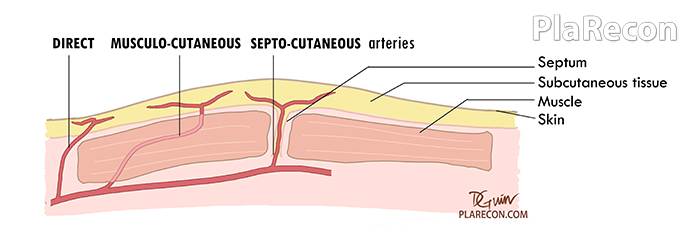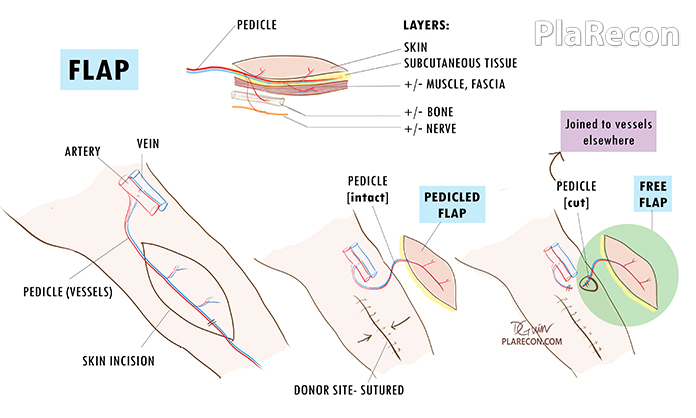‘Flap’ is a term regularly used by Plastic and Reconstructive Surgeons mainly and is a mystery to most patients and doctors alike. It is distinctly different from a ‘graft’, that it is wrongly referred to by most.
Older definitions do not completely describe the term flap in today’s context, as most of these definitions date back to the pre-free-flap era.
Brief History of ‘Flap’
The term ‘flap’ originated from the Dutch word ‘flappen’, which roughly means ‘a broad and loose thing, that is hung fastened by one end’. (16th century). This typically describes as a pedicled flap.
The first documented evidence of the use of a flap dates back to 600-700 BC [Sushruta Samhita] in the present Varanasi where Sushruta (The Father of Surgery and Plastic Surgery in India) used ‘cheek flap’ for nasal reconstruction. It’s interesting to learn more about the Firsts in Flap Surgery, check them out.
So, what is a flap?
Flap Definition
A ‘Flap’ can be defined as: “Unit of tissue(s) which, when transferred from its original (donor) site in the body to another (recipient), relies on the nourishment it receives from blood supplied through its intact vasculature.”
So, it does not depend on the bed of the recipient site/ defect for its survival by imbibition or vascular ingrowth (neo-vascularization) but, it may receive blood supply from the recipient site blood vessels which have been microsurgically anastomosed to the existing flap vasculature (as in ‘free flaps’).
Components of a Flap
A flap can comprise of any/ all/ possible combinations of the following components along with their vasculature:
- Skin- Epidermis, Dermis
- Subcutaneous tissue (Fat)- Superficial, Deep
- Fascia
- Muscle
- Bone
- Nerve
- Lymph nodes (with subcutaneous tissue)
- Viscera
Difference between Flap and Graft
| FLAP | GRAFT |
| 1. Transferred along with its vasculature. | 1. Transferred without it’s vasculature. |
| 2. Depends on blood supplied through its intact vasculature for nourishment initially. [Source: Vessel(s) from the donor site in a flap, and from the recipient site in a free flap.] | 2. Depends only on the nourishment it receives from the recipient bed (split-thickness skin graft) or from the margins (full-thickness skin grafts). |
Simple Flap Classifications
Based on Vascularity
- Random pattern
- Axial (eg. direct, septocutaneous, musculocutaneous, venous)
Based on Contiguity
- Local
- Regional [pedicled]
- Distant [pedicled/ free]
Based on Composition
Based on the components of a flap (as mentioned above) that is present. Few examples are:
- Cutaneous
- Fascial
- Fasciocutaneous
- Muscle
- Musculocutaneous
- Osseous
- Osseocutaneous
- Free Lymph node transfer
For more details check out: Flap physiology, Flap classifications (Mathes and Nahai for Muscle flaps, Fasciocutaneous flap classifications) and don’t forget to Subscribe for more.

Tutorials & tips in Plastic Surgery
+ Weekly updates of high-quality webinars!





